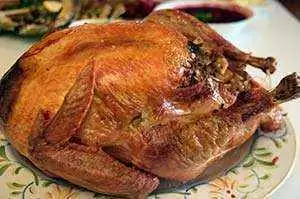Celiac.com 01/27/2012 - Wheat is the most popular grain in the United States and is found in a multitude of products. We are taught from young that milk helps our bones grow strong. So what do people do who cannot safely consume these products? They eat very well!
“No Gluten” means avoiding all wheat, rye, barley, malt, kamut, spelt, triticale, graham flour, and contaminated oats. But that won’t stop anyone who loves chocolate chip cookies from finding an alternative way to make them! On a gluten-free diet, combinations of substitute flours are used (see Table 1).
Celiac.com Sponsor (A12):
Once you have the magic combination of gluten-free flours, add a little more flavoring, a little more leavening, and voila! You have wonderful chocolate chip cookies!
But how do you make those cookies if you are also allergic to dairy products? Do not despair. There are viable alternatives to all ingredients. Allergies to dairy products may be a reaction to the lactose in dairy products (the natural sugar in milk), to casein (milk protein), or to both.
Lactose is often used in breads, cakes, cereals, cooking mixes, prepared meats and fish, and in soups. Tuna fish often contains sulfites and has lactose in the broth. It is even found in some medications. Read labels constantly for hidden lactose. Some lactose-sensitive people may tolerate un-pasteurized yogurt because yogurt cultures produce the enzyme lactase, which breaks down lactose into a simpler, more readily-digestible form. This also applies to buttermilk and some cheeses.
Casein is the protein found in milk. Fortunately, cow’s milk is one of the easier ingredients to substitute in cooking; use equal amounts of soy milk, rice milk, coconut milk, water, or fruit juices. Read labels—beware of products labeled “Dairy Free”, like Cool Whip, which often contain casein (milk protein). Some non-dairy cheese substitutes made from soybeans and almonds may still contain casein to give them a more authentic texture. Casein is also used as a binder in products like hot dogs, pepperoni, salami and sausage. Milk protein increases production of mucus-aggravating conditions, such as asthma, bronchitis and sinusitis. It acts as an irritant to our immune systems, contributing to allergies and autoimmune diseases.
Let’s get back to our chocolate chip cookies. What do we use instead of the butter and milk? Here are some substitutions that I often use:
- Applesauce (may replace up to ¾ of the butter in a recipe.)
- Coconut Butter (Use ¾ cup coconut butter for each 1 cup of butter called for in a recipe.)
- Coconut Milk
- Lactaid Milk (The lactase enzyme has been added to milk to convert 99% of the lactose into an easily-digestible sugar. While many lactose-intolerant people are able to safely consume this milk, it contains casein and is not suitable for those on a casein-free diet.)
- Milk-free Margarine (Fleischmann’s makes a milk-free, gluten-free margarine. Milk-free margarine may burn if heated too high over direct heat.)
- Non-Dairy Yogurt
- Nut Butter
- Oil (Use ¾ cup corn, vegetable or olive oil for each cup of butter called for in a recipe.)
- Rice Milk
- Soymilk (Each brand of soymilk reacts differently. Some will give an un-wanted color to your dish; others cannot be heated to a high temperature. When substituting soymilk for cream, add a little vegetable oil to achieve the right consistency. Read labels carefully, as some commercial soymilk products are not gluten-free.)
- Vegetable Shortening
When in doubt about the diary-free status of a product, the Kosher symbols found on some packages may also be used as a guide:
- UD: Contains diary
- KD: The product has milk protein.
- DE: The product was produced on equipment shared with dairy products.
- Pareve (or Parve): The product is “neutral”, which means no animal ingredients. The majority of Parve products are dairy-free. However, Jewish law states that if the product has less than 1/5% dairy by volume, they may take special measures to allow for the product to be labeled Pareve.
Now we just have to search for safe chocolate chips for our cookies. Many of the darker chocolates do not contain diary or gluten, for example, “Now” brand carob chips contain no dairy or gluten.
Eureka! You have successfully converted your chocolate chip recipe! Eat and enjoy! The important thing to remember is that there are always good, viable substitutions available. The more diet restrictions you have, the more innovative you have to be with your cooking. There is almost nothing you cannot eat—you just have to learn to make it a little differently—enjoy!
Table 1
- Almond flour
- Amaranth flour
- Brown rice flour
- Buckwheat flour
- Chestnut flour
- Corn flour
- Fava bean flour
- Flax Seed Flour
- Garbanzo bean flour (Chickpea flour)
- Lentil flour
- Mung bean flour
- Pea flour
- Potato flour
- Potato starch flour
- Pure Cornmeal
- Sorghum flour
- Sweet potato flour
- Sweet rice flour
- Tapioca flour
- White bean flour
- White rice flour



.webp.6e7bbbf8793807aefc1e09163e1cb79c.webp)







Recommended Comments